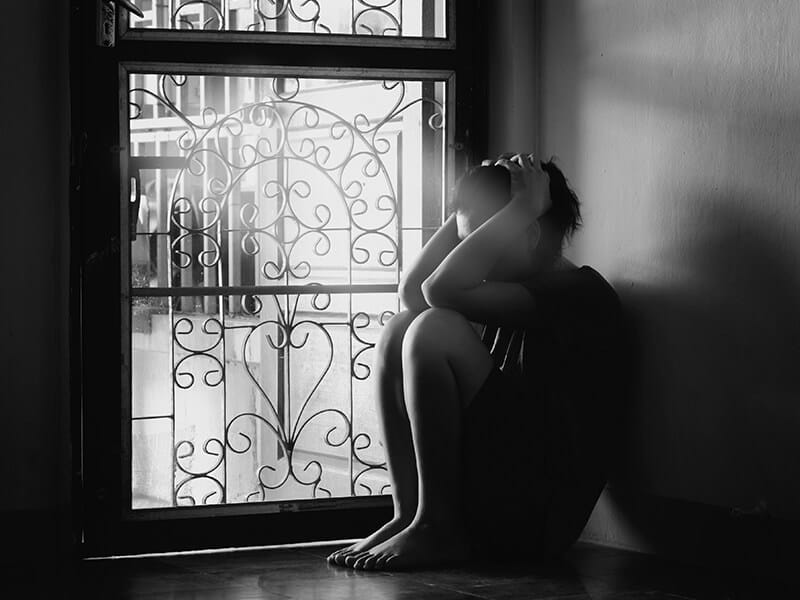
Bipolar disorder affects millions of people in the U.S.; it’s estimated that nearly 6 million adults live with it, but unfortunately diagnosing bipolar disorder in children is much more tricky. This is due in part to the fact that children and teens often undergo rapid emotional changes and mood swings as a general part of their development, making it difficult to tell the difference between normal behavior and something that should be looked at as a possible disorder.
Joined with the fact that many children and teens are diagnosed with ADHD--or Attention Deficit Hyperactivity Disorder--and that ADHD symptoms often mimic those of bipolar disorder, it can be hard to correctly diagnose a young person.
The main differences are that bipolar disorder affects mood, while ADHD targets behavior and language. Bipolar disorder tends to show symptoms in episodes. ADHD, on the other hand, causes behavior changes that are constant. There are similar symptoms as well, though, including being easily irritated, having issues with speech, restlessness (including at night) and becoming defiant of authority.
Bipolar disorder can manifest different symptoms depending on how old the individual is. In younger people, the disorder will usually show itself either in a manic way or a depressive way. Mania occurs when the individual becomes overly obsessed with one thing. It can cause elation or silly behavior, and even cause those under its spell to go for days with no adequate sleep or rest. They also may begin talking nonstop--particularly about their obsession--or show a disregard for their own personal safety.
Depressive symptoms can include a loss of sleep or sleeping too much, a decline in physical activity or in doing things that once brought joy, changes in appetite, feelings of hopelessness or worthlessness, and even suicidal thoughts. It’s extremely important to keep communication open with individuals who suffer from bipolar disorder and to seek a doctor’s opinion on a diagnosis so that treatment can begin.
Treatment can include medication, therapy, or a combination of the two, and sometimes it’s helpful for people living with bipolar disorder to have a pet. Service animals can be extremely beneficial and can help control anxiety and lift moods.
ADHD exhibits itself in a few ways. Symptoms may include difficulty sitting still, trouble completing tasks, and a general lack of focus. Similar to bipolar disorder, it can also affect a person’s emotional state. Children with ADHD may have issues controlling their emotions, often having outbursts when they become too overwhelmed. There may be a struggle when it comes to socializing with others, as well: a child with ADHD might interject while someone else is talking or have trouble taking turns in class.
It’s important to confer with others about your child’s behavior so you have well-rounded information to offer a specialist. Talk to teachers about any behavioral issues at length: what exactly happened, how did your child react, and how often has that kind of incident occurred, for example. Any group leaders or coaches from your child’s extracurricular activities can also give you important insight, especially when it comes to socializing. It’s possible that your child may not show as many signs at home where he or she is comfortable and more relaxed, so you want to check in to see if there’s anything you should be aware of when you’re not around. If you have split custody or if your child spends after school hours with a loved one, make them a part of the conversation, as well.
Perhaps most importantly, be sure you include your child in the process. Even if you’re only somewhat suspicious there may be an issue (bipolar disorder, ADHD, or any other conditions), talk to him or her about it. Discuss problems at school when they arise, and really dig to find out what your child thinks and feels about it. What is their side of the story? How did the situation escalate? How did he or she feel about the end outcome? Let him or her know you’re asking not to increase punishment or make them feel bad, but because you want to understand so that you can help. But try to avoid mentioning specific names of conditions, or even that you believe he or she might be afflicted. Medical jargon can be scary for a child, especially one who is already struggling with social issues.
One of the ways doctors can diagnose dual disorders is to look at how the individual behaves over time. As they get older, symptoms of ADHD will usually decrease, but bipolar disorder will stick around.
"So if a youngster with ADHD continues to have prominent hyperactivity and impulsivity while growing up, it may indicate that accompanying bipolar disorder should be considered," says Dr. Timothy Wilens.
Another factor that doctors consider is that ADHD is genetic and almost always occurs after a long family history, while bipolar disorder doesn’t always have those connections. Many health professionals believe that it’s important to treat bipolar disorder first, as ADHD treatment may worsen symptoms or bring on mania.
The good news is that doctors have been very successful in finding treatment for both ADHD and bipolar disorder in the same patient, and as long as medication and/or therapy is consistent, there is no reason the individual can’t live a normal life.
Don’t forget to make your child a part of the conversation throughout the diagnosis and treatment process. It’s likely going to feel intimidating for him or her at first, so go with them to therapy sessions and doctor’s appointments. Even if the therapist wants to speak to them on their own, stay nearby in the waiting room instead of killing time at the coffee shop around the corner. Your physical presence can be a major comfort in this time of uncertainty, so stay close. Talk to them about how therapy is going and how medication makes them feel. You might even want to keep a journal about your discussions so you have detailed notes for the doctor. Together, you and your child can overcome a dual diagnosis.

